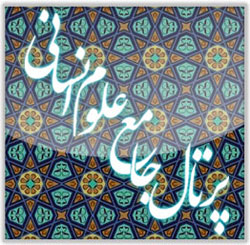A Comparative Study of the Unity of Existence from the Perspective of Shams and Ibn Arabi
Keywords:
Unity of Existence, Ibn Arabi, ShamsAbstract
The aim of the present research is to comparatively examine the concept of the unity of existence from the perspective of Shams and Ibn Arabi. The methodology employed in this study is descriptive–analytical. The theory of the unity of existence can be regarded as the most central concept in Islamic mysticism, with all other concepts revolving around this main axis and serving to exalt it. In Shams’s school, everything in this world is in a state of unity and singularity, with no separation between them. Concepts such as the unity of the witness and the witnessed, the unity of the souls of the believers and saints, and the unity of the mystic with God (the state of annihilation) can be clearly observed. In summary, from Shams’s perspective true monotheism is achieved when one recognizes that the world is nothing other than God and that the multiplicities are merely different manifestations and expressions of God. In contrast, according to Ibn Arabi, monotheism is an endeavor to attain self-knowledge in the human soul, whereby one seeks to understand that the God who created him is “one” and possesses no partner in His divinity. “Unity” (being one) is a quality of the Truth, and its derived appellation is “Ahad and Wahid” (singular and one); however, “singularity” refers to the realization of unity into oneness, in the sense that it can be apprehended only through the establishment of a onefold intellectual apprehension, and if any relation exists, it is indeed a relation of negation. From Ibn Arabi’s perspective, discourse regarding the monotheism of God, in terms of His divinity, stems from the affirmation of His existence; yet, the affirmation of His existence, by the necessity of reason, is apprehended based on the existence of a possible entity through one of two modes.








